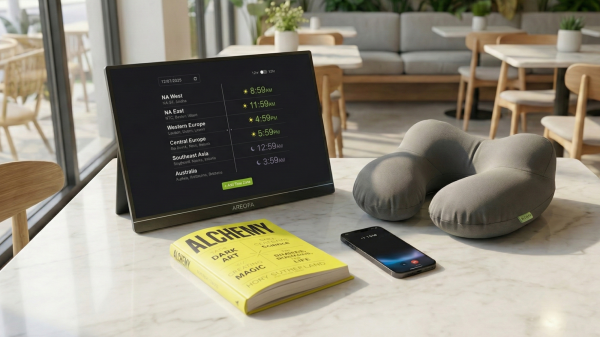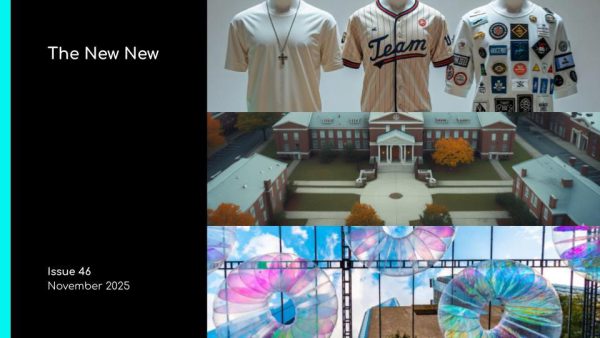Brand Movements — The Next Era for Marketing
What is a Brand Movement? And why is it emerging as the platform for next-gen marketing strategies?

To those who study marketing history, it was only 2015 when the profession rallied and, led by a seminal book, declared we had entered a then-new seventh era of marketing: the experience era. At the time, this framing worked. Our consumer culture had shifted from valuing things to celebrating the always-on sharing of fleeting experiences. FOMO for the YOLOers was written into creative briefs and marketing strategies. Meanwhile, our business culture was dropping X’s to define strategies for their brand (BX), consumer (CX), employee (EX), and digital experiences (DX). The successful brands of this era used playbooks focused on moment-to-moment, experience-to-experience journeys. While the funnel is dead, marketing strategy is still dominated by building a series of stops along a customer lifecycle map.
Yet, as we all know, a lot has changed since 2015.
Today, new societal and cultural trends are driving modern culture. We are welcoming the rise of today’s stakeholder economy. And businesses are responding by reimagining how they develop their brands’ identities, establish their own media empires, engage their communities, and even build entirely new worlds.
Across all of this—the external megatrends and the evolving marketing playbooks—brands are shifting from working in a series of moments to fueling long-term engagements. It is in this shift that we see a big opportunity forming. It is an opportunity defined by the emerging next era for marketing—the era of Brand Movements.
Defining Brand Movements
From here at Opus Agency to prominent consulting firms, the fertile intersection of building brands and building movements is now being researched and analyzed. It is here that Brand Movements are being defined.
The definition begins with strong, modern brands. They solve unmet needs. They change behaviors. They help people express their identities. They bring people together and activate communities.
Then the definition gets expanded by looking broader and focusing on the brands that are outliving fads and trends. As Deloitte’s CMO Program discovered through their recent research into the science of movement marketing, Brand Movements happen when a brand catches fire and becomes more than just something to buy; it centers a community and becomes part of people’s daily lives.
Characteristics of a Brand Movement
This new era of Brand Movements will be a natural fit for companies founded with world-shaping ambitions, like Salesforce. Through our analysis of our clients who have catalyzed their own Brand Movements, we’ve identified these characteristics of success:
- Sticky Idea
Start with a bold idea that is simple, distinct, and aimed at shifting mindsets or behaviors. The sticky idea replaces the old way of doing, acting, and thinking—it defines the ultimate goal the group intends to achieve. - Common Cause
Unite participants around a common cause, creating a shared rallying cry based on similar values. - Credibility
Shine the guiding light into new frontiers. The business’ people are thought leaders and subject matter experts. The brand frames them as the credible authority that people trust and champion. - Values
Showcase the movement’s (more than just the brand’s) values. Have them reflect on the commonalities and the qualities your participants admire and aspire to adopt. Connect the values to your Sticky Idea and Common Cause. - Identity
Provide a way for participants to visually display their commitment to the movement and its underlying brand, including a unique visual marker that symbolizes their membership and commitment to the group. Or an icon that demonstrates the shared value and makes them an identifiable member of the movement. - Participative
Provide clear roles and a surface area for people to make an imprint while establishing a solid call to action - Organized
Establish the order, with the underlying owners, process, and ambassadors, to feed tent post moments and sustained campaigns that reinforce the ultimate goal, celebrate the Sticky Idea, spotlight the Common Cause, and assure participants that the long-term vision remains strong. - Shared Experiences
Create a series of spaces for belonging and ways for participants to join the rallying cry in action. Provide an anchor with rituals and traditions. Use content as the catalyst for driving new peer connections.
A Leading Example
When exploring the potential for catalyzing a Brand Movement, our Opus Agency teams use a simple litmus test: “Could we, through the eyes of their community, make a documentary about this brand?” If the answer is yes, then the brand has fueled a movement. Our client Salesforce has become the go-to example for showcasing Brand Movements.
If our teams were filming a documentary on the movement that Salesforce has fueled, we would focus on how they started in 1999 with a common cause: their founding “no software” mantra. From there, we would showcase how they rallied a community that, today, proudly wears their Trailblazer badges, lives by Salesforce’s Ohana culture, and comes together around their own campfires at the trailhead (e.g., Salesforce events). A big focus of this documentary would be on Salesforce’s use of shared experiences in fueling their Brand Movement.
Catalyzing Brand Movements through Shared Experiences
For marketing executives and event professionals, the focus on Brand Movements will require shifts in thinking, realigned strategies, repurposed investments, and reimagined experience architectures to capture and catalyze the characteristics of their Brand Movement.
Yet, the core to their success remains with the power of our industry: when we bring people together who share a common passion and purpose, then ideas percolate, values lead, and behaviors shift. By convening a community through an event, an experiential marketing program, or a digital-first moment, we spark, strengthen, and propel a Brand Movement.
It is together where we shift from forming moments to fueling movements. And, as the New York Times Magazine explored in their piece on when a moment turns into a movement: “Ambitious goals have usually seemed ‘impossible’ until they were achieved, at which point they suddenly became ‘inevitable.’”
For businesses looking to shape the world, it is time to turn the impossible into the inevitable. It is time to catalyze your Brand Movement.
Ready? Let’s move.






